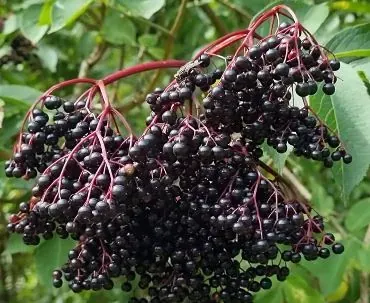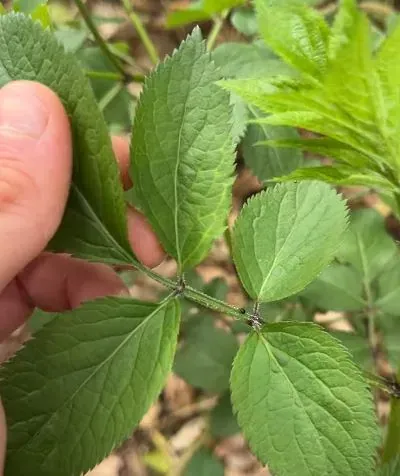Algerian Wild Plants: Discovering Sambucus nigra -Black Elderberry

Taxonomy:
Kingdom: | Plantae |
Phylum: | Tracheophytes |
Class: | Angiosperms |
Class: | Eudicots |
Order: | Dipsacales |
Family: | Adoxaceae |
Genus: | Sambucus |
Species: | S. Nigra |
Sambucus Nigra is a medicinal plant found in Algeria and it is
a perennial plant of the Adoxaceae family, found in Europe
and North Africa, and it is a short-lived shrub up to 3-4 meters high with
opposite leaves, of a complex shape, containing 5-7 oval leaves. The flowers
are white and very fragrant. The fruits are small poisonous black berries
filled with dark red juice.
Synonyms
Sambucus nigra subsp. cerulea
Sambucus caerulea var. neomexicana
Sambucus nigra subsp. canadensis
Introduction
Sambucus nigra, commonly known as Black Elderberry, is a valuable medicinal and ecological plant found in Algeria. Known for its antioxidant-rich berries and traditional healing properties, this plant thrives in various regions of North Africa.How to Identify Sambucus nigra?
Leaves: Pinnate, 5-7 leaflets, serrated edges
Flowers: Small, creamy-white, fragrant, in umbrella-shaped clusters
Berries: Dark purple to black, juicy, arranged in drooping clusters
Bark: Gray-brown, fissured with age
|
Type
Of Plant |
Life
Cycle |
Height |
Flowering
Time |
Altitude |
|
Shrub |
Perennial |
2 to 4 m |
Juin-July |
0-800 m |
|
Mediterranean |
Edible |
Color |
Abundance |
Toxicity |
|
Yes |
No |
White-Cream |
|
Medium toxic |
Other
Common Name:
|
Arabic |
Berber/Targui |
English |
French |
Other
Name |
|
Baylasen aswed |
Sembouqa |
Elderberry blackElder |
Sureau Noir, |
European elder,Tapiro |
Algerian Distribution
- Found in Northern Algeria, particularly in:
- Mediterranean coastal areas
- Forested zones of the Atlas Mountains
- Near agricultural lands and water bodies
Where to Find It in Algeria: Exact Locations
Sambucus nigra grows in:
- Northern Algeria (humid and subhumid regions)
- Tell Atlas Mountains (forest edges, riverbanks)
- Kabylie Region (Annaba, Collo,skikda)
- Near water sources (wadis, streams)
Related species:
§
Sambucus
racemosa
§
Sambucus
Palmensis
§ Sambucus Canadensis














No comments: